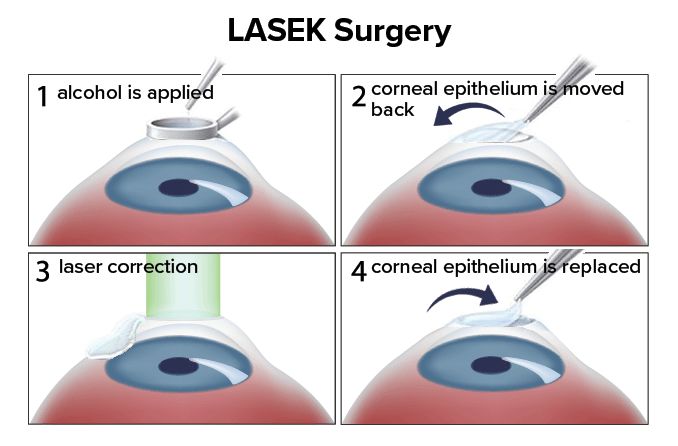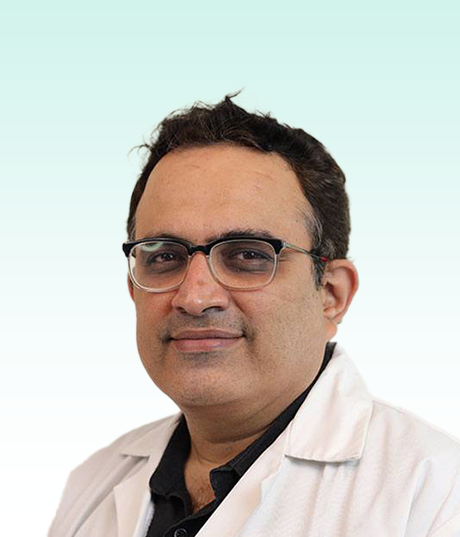Lasek Surgery
LASEK is an eye surgery that combines many of the benefits of other vision correction surgeries. Laser epithelial keratomileusis, or LASEK, combines the benefits of the two most commonly performed procedures — LASIK and PRK. LASEK eye surgery is used to treat astigmatism, nearsightedness, or farsightedness.
Who Needs LASEK Surgery
LASEK surgery is suitable for individuals who have refractive errors and desire to reduce or eliminate their dependence on glasses or contact lenses. It is commonly recommended for individuals with thin corneas, irregular corneas, or other conditions that make them ineligible for LASIK surgery.
When to See a Specialist
If you are interested in LASEK surgery, it is advisable to schedule a consultation with an experienced ophthalmologist or refractive surgeon. They will evaluate your eye health, assess your suitability for the procedure, and answer any questions or concerns you may have.
Procedure
Anesthetic Eye Drops: Prior to the surgery, the eye is numbed with the help of anesthetic eye drops to ensure a painless experience.
Epithelial Flap Creation: The surgeon uses a microsurgical instrument or a special laser to create a thin flap of corneal epithelium.
Excimer Laser Reshaping: The underlying cornea is reshaped using an excimer laser to correct the specific refractive error, such as nearsightedness, farsightedness, or astigmatism.
Epithelial Flap Repositioning: The corneal flap is gently repositioned back into place, where it adheres naturally without the need for sutures.
Protective Contact Lens Placement: A soft contact lens may be placed on the cornea to protect it during the initial healing phase.
Post-operative Care: The surgeon will provide detailed instructions for post-operative care, which typically includes the use of prescribed eye drops, avoiding strenuous activities, and attending follow-up appointments.
Road to Recovery
The recovery process after LASEK surgery may take several days to weeks. During this time, it is normal to experience mild discomfort, blurry vision, and light sensitivity. It is crucial to follow the post-operative care instructions provided by the surgeon to ensure proper healing and minimize the risk of complications.
Risk Management
While LASEK surgery is generally safe and effective, like any surgical procedure, it carries certain risks. These may include dry eyes, glare or halos around lights, temporary or permanent changes in vision, infection, or delayed healing. Choosing an experienced surgeon and following all pre- and post-operative instructions can help minimize these risks.
Benefits of LASEK Surgery
Correcting Vision Problems: LASEK surgery can effectively correct refractive errors, reducing or eliminating the need for glasses or contact lenses.
Flexibility: LASEK surgery is suitable for individuals with thin corneas or other corneal abnormalities that may make them ineligible for LASIK.
Safety: LASEK surgery does not involve creating a corneal flap as in LASIK, reducing the risk of flap-related complications.
Improved Quality of Life: By achieving clearer vision without the reliance on corrective eyewear, individuals can enjoy improved visual freedom and convenience.
Frequently Asked Questions
Is LASEK surgery painful?
LASEK surgery is generally well-tolerated and not painful. Anesthetic eye drops are used to numb the eye, and any discomfort during the procedure is minimal. Some mild discomfort or sensitivity may be experienced during the initial healing period.
How long does the recovery period take after LASEK surgery?
The recovery period after LASEK surgery can vary from a few days to several weeks. During this time, the vision gradually improves, and any initial discomfort or side effects subside. It is important to follow the post-operative care instructions provided by the surgeon to ensure optimal healing.
Can both eyes be treated during the same surgery?
Generally, LASEK surgery is performed on one eye at a time to allow for proper healing and assessment of the outcomes before treating the other eye. However, this can be discussed with your surgeon based on your specific circumstances.
Are the results of LASEK surgery permanent?
LASEK surgery aims to provide long-term vision correction, and in many cases, the results are permanent. However, it is important to note that the eyes can still undergo age-related changes, and some individuals may require a follow-up procedure or use glasses for certain activities as they get older.
Treatment Plans
- Trauma & intensive care $59
- Aged Care $29
- Community Services $25
- Diagnosis & Investigation $48
- Medical & Surgical $82
- Mental Health $74
- Rehabitation $24
- Specialised Support Service $19
- Trauma & intensive care $59
- Aged Care $29
- Community Services $25
- Diagnosis & Investigation $48
- Medical & Surgical $82
- Mental Health $74
- Rehabitation $24
- Specialised Support Service $19
Treatians As The Best Choice
Treatians understand that seeking medical treatment abroad can be a daunting experience for patients and their families. That’s why the company offers end-to-end support to its clients, from the initial consultation to post-treatment care. The company provides personalized treatment plans that are tailored to meet the individual needs of each patient, and its team of dedicated professionals is always on hand to provide guidance and support throughout the entire process. Contact us at +91-7982312582, drop your email [email protected]
- Trauma & intensive care
- Aged Care
- Community Services
- Diagnosis & Investigation
- Medical & Surgical
- Mental Health
- Rehabitation
- Specialised Support Service
Service Recipient Says

Oxmox advised her not to do so, because there were thousands of bad Commas, wild Question Marks and devious.
Kolis Muller NY Citizen
Oxmox advised her not to do so, because there were thousands of bad Commas, wild Question Marks and devious.
Kolis Muller NY Citizen














Oxmox advised her not to do so, because there were thousands of bad Commas, wild Question Marks and devious.
Kolis Muller NY Citizen